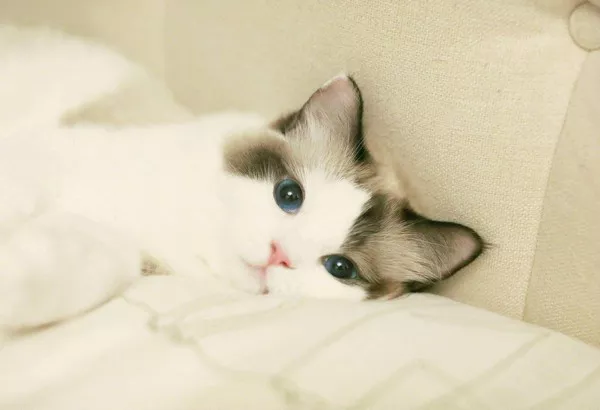Labradoodles, with their charming demeanor and distinctive coats, have become a beloved breed for many dog enthusiasts. One crucial aspect of grooming these delightful companions involves carefully trimming their faces to maintain both their appearance and comfort. While it may seem daunting at first, with the right tools, techniques, and patience, you can achieve professional-looking results from the comfort of your home. In this comprehensive guide, we’ll delve into the step-by-step process of cutting a Labradoodle’s face, ensuring they remain happy, healthy, and stylish.
Understanding Labradoodle Coat Types
Before diving into the trimming process, it’s essential to understand the various coat types that Labradoodles can possess. Labradoodles typically inherit their coats from their parent breeds: the Labrador Retriever and the Poodle. As a result, Labradoodles can have coats ranging from straight and wiry to curly and dense.
Straight/Wavy Coat: Labradoodles with straight or wavy coats often have hair that lies flat against their bodies. While these coats may be easier to maintain, they still require regular grooming to prevent matting and tangling.
Curly Coat: Labradoodles with curly coats resemble their Poodle ancestors, with tight curls that can range from loose waves to dense spirals. Curly coats are prone to matting and require more frequent grooming to keep them in top condition.
Understanding your Labradoodle’s specific coat type will help you determine the appropriate grooming techniques and tools needed for trimming their face effectively.
Essential Tools for Trimming
Before embarking on the trimming process, gather the necessary tools to ensure a smooth and stress-free experience for both you and your furry friend. Here’s a list of essential grooming tools:
Grooming Scissors: Invest in high-quality grooming scissors with sharp blades specifically designed for trimming delicate areas such as the face. Blunt or dull scissors can cause discomfort and uneven cuts.
Clipper or Trimmer: While not always necessary, a clipper or trimmer can be useful for tidying up larger areas or achieving a more uniform length.
Comb or Brush: A fine-toothed comb or slicker brush helps detangle knots and remove debris from your Labradoodle’s coat before trimming.
Styptic Powder: Accidents can happen, and in the event of a small cut, styptic powder helps stop bleeding quickly.
Treats: Positive reinforcement is key to maintaining your Labradoodle’s cooperation during grooming sessions. Have plenty of treats on hand to reward good behavior.
With your grooming arsenal prepared, it’s time to delve into the step-by-step process of trimming your Labradoodle’s face.
Step-by-Step Trimming Guide
Preparation: Begin by ensuring your Labradoodle is calm and relaxed before starting the grooming session. Brush or comb through their coat to remove any knots or tangles, paying particular attention to the face and ears.
Choosing the Right Style: Decide on the desired style for your Labradoodle’s face trim. Popular options include the teddy bear cut, where the face is rounded, or the traditional Poodle-style trim with longer hair on top and shorter sides.
Trimming the Eyes: Start by trimming around your Labradoodle’s eyes to ensure clear visibility and prevent irritation. Use grooming scissors to carefully trim any overgrown hair that obstructs their vision, taking care not to poke or nick the skin.
Defining the Muzzle: Next, trim the hair on the muzzle to create a clean and defined look. Comb the hair downwards and use scissors to trim any excess hair, following the natural contours of your Labradoodle’s face.
Shaping the Topknot: If desired, create a topknot by gathering a small section of hair from the top of your Labradoodle’s head and securing it with a clip or elastic band. Trim any stray hairs to achieve a neat and polished appearance.
Trimming the Ears: Carefully trim the hair on and around your Labradoodle’s ears to maintain a tidy and symmetrical look. Use grooming scissors to remove any excess hair, being mindful of the ear canal to avoid injury.
Blending and Finishing Touches: Take a step back and assess your Labradoodle’s face trim for any uneven areas or stray hairs. Use grooming scissors to blend any harsh lines and make final adjustments to achieve a polished finish.
Reward and Reassure: Once the trimming process is complete, reward your Labradoodle with plenty of praise and treats for their patience and cooperation. This positive reinforcement helps strengthen the bond between you and your furry friend and makes future grooming sessions more enjoyable.
Maintenance Tips
Maintaining your Labradoodle’s trimmed face requires regular upkeep to keep them looking their best. Here are some maintenance tips to keep in mind:
Regular Brushing: Brush your Labradoodle’s face daily to prevent mats and tangles from forming.
Routine Trims: Schedule regular grooming sessions every 4-6 weeks to maintain the shape and length of their face trim.
Check for Irritation: Monitor your Labradoodle’s face for any signs of irritation or discomfort, such as redness or itching, and consult with your veterinarian if necessary.
By following these grooming tips and techniques, you can confidently trim your Labradoodle’s face with precision and care, ensuring they always look and feel their best. Remember, grooming is not only about maintaining your dog’s appearance but also about strengthening the bond between you and your furry companion. Enjoy the grooming process as a chance to connect and pamper your beloved Labradoodle.
Related Topics:




















